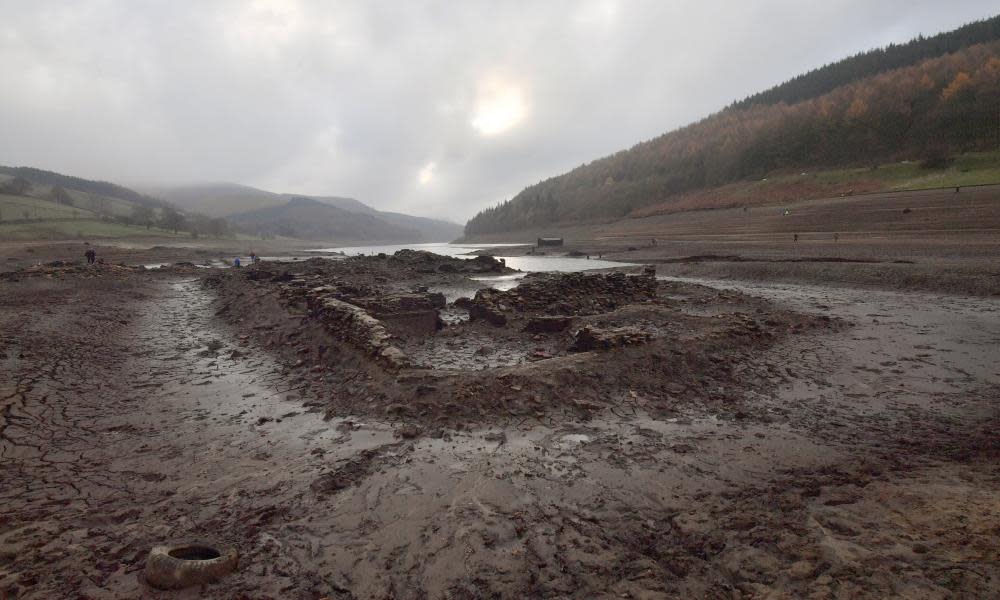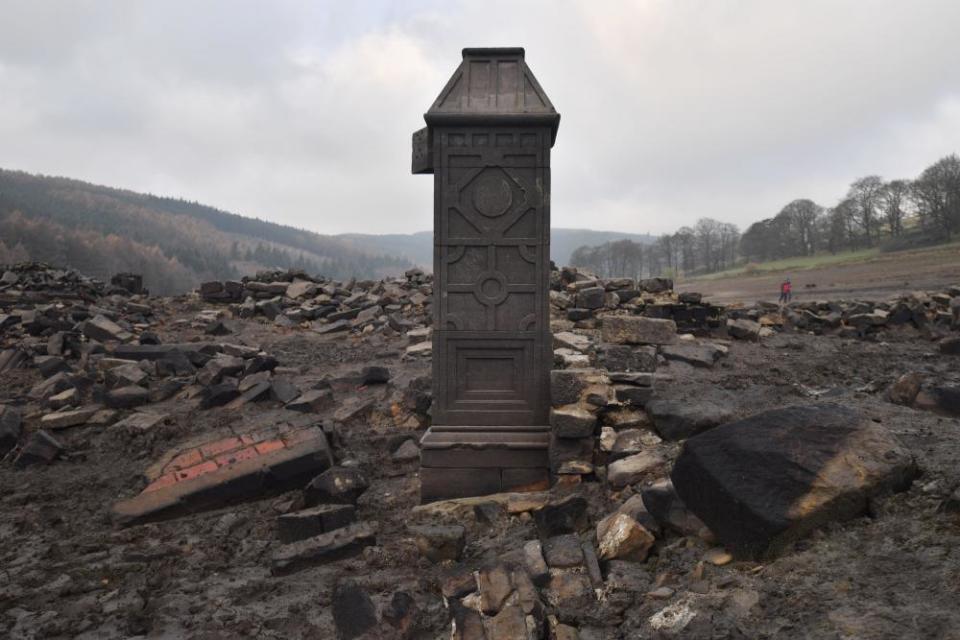Country diary: a lost village rises from the mud

The upper Derwent valley is often a marvel in autumn, but this year the woods were spectacular. A few days of intense cold in late October overturned expectations of a muted display, and two weeks later I was cycling through one of the glories of nature, a crisp, vibrant swatch of colour running from gold through copper to deepest bronze: such wealth. Most striking of all was a plantation of larches above Ladybower reservoir, where it seemed that not a needle had fallen and streaks of yellow flame licked the hillside.
Below that? Nothing. Just a void of dreary brown mud where the water used to be, as though the landscape were simply a stage set in the process of being rolled up and put away. This year’s dry summer had done for Ladybower and, in the process, resurrected a lost world. Sticking out of the gloop were the isolated capstones of a bridge that once crossed the river to the drowned village of Derwent.
Upstream were the remnants of elegant Derwent Hall, sold to the local water authority after the first world war and demolished in 1943 just before the waters rose. The best architectural salvage went to Thornbridge Hall near Ashford, although I’ve heard whispers that a few houses in nearby Bamford acquired smart new floors.

I walked stickily through what had once been Derwent’s gardens to stand on the stump of an oak. Judging from its girth, it must have been planted around the time of Waterloo. I could see where the sawyer had notched the trunk to drop it. Slightly below me were the outline of a fishpond and the stubby remains of shrubs. Most of what’s left of the buildings is useless stone, like broken biscuits. A detectorist had dug a small hole in the mud while hunting for treasure, but hadn’t had much luck. A rusted plate had been tossed aside, along with worthless fragments of glass.
One elegant feature remains: a loveseat, two walls set at right angles just above the river, with a bench low down along the length of them. Sat here, a young couple could remain unobserved and still enjoy the view. Now, just the seat is left and winter rains will soon take that as well.


 Yahoo News
Yahoo News 
